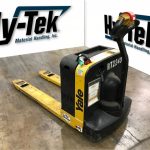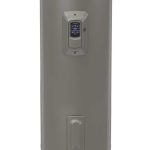Revolutionize Your Work With Electric Bucket Trucks: Unleash Efficiency And Power Today!
Electric Bucket Trucks: Revolutionizing the Utility Industry
Table of Contents
1. Introduction
2. What are Electric Bucket Trucks?
3. Who Uses Electric Bucket Trucks?
4. When Were Electric Bucket Trucks Invented?
5. Where are Electric Bucket Trucks Used?
6. Why Choose Electric Bucket Trucks?
7. How Do Electric Bucket Trucks Work?
8. Advantages of Electric Bucket Trucks
9. Disadvantages of Electric Bucket Trucks
10. Frequently Asked Questions (FAQ)
11. Conclusion
12. Final Remarks
Introduction
1 Picture Gallery: Revolutionize Your Work With Electric Bucket Trucks: Unleash Efficiency And Power Today!
Welcome, Smart Readers, to an in-depth exploration of electric bucket trucks. In this article, we will delve into the world of these innovative vehicles that are making waves in the utility industry. Electric bucket trucks have revolutionized the way we approach maintenance, repairs, and other tasks that require working at height. Join us on this journey as we uncover the many facets of electric bucket trucks and why they have become a game-changer in the field.
Electric bucket trucks, also known as aerial lifts or cherry pickers, are specialized vehicles equipped with an extendable boom and a bucket-like platform at the end. This platform allows workers to safely reach heights that are otherwise inaccessible. Unlike traditional bucket trucks that rely on diesel or gasoline engines, electric bucket trucks are powered by electricity, making them more environmentally friendly and cost-effective in the long run.

Image Source: hardworkingtrucks.com
Invented in the late 20th century, electric bucket trucks quickly gained popularity due to their versatility and efficiency. They are widely used in various industries, including telecommunications, construction, forestry, and public utilities. The ability to navigate rough terrains and access elevated areas with ease has made electric bucket trucks an indispensable tool for professionals.
In the following sections, we will explore the various aspects of electric bucket trucks, including their applications, advantages, disadvantages, and frequently asked questions. By the end of this article, you will have a comprehensive understanding of electric bucket trucks and their significance in the modern world.
What are Electric Bucket Trucks?
Electric bucket trucks, as the name suggests, are vehicles equipped with an extendable boom and a bucket-like platform at the end. The platform, commonly referred to as the bucket, is designed to carry workers to elevated areas safely and efficiently. Electric bucket trucks utilize electric motors or batteries to power their operations, eliminating the need for traditional fuel sources.
These versatile vehicles come in various sizes and configurations. They can range from compact models used for streetlight maintenance to larger trucks used in the construction and forestry industries. The boom of an electric bucket truck is hydraulically operated and can extend vertically or horizontally, allowing workers to reach diverse locations with ease.
Electric bucket trucks are equipped with several safety features, including hydraulic controls, emergency lowering systems, and stabilizing outriggers. These features ensure the stability and security of workers while they perform tasks at height. Additionally, the bucket is enclosed, providing a secure working space and protecting workers from external elements.
Now that we have a basic understanding of electric bucket trucks, let’s explore who uses these vehicles and the industries they serve.
Who Uses Electric Bucket Trucks?
Electric bucket trucks are utilized by a wide range of professionals across various industries. Some of the key sectors that heavily rely on electric bucket trucks include:
1. Telecommunications: Telecommunication companies use electric bucket trucks for installing and maintaining overhead cables, satellite dishes, and other communication equipment. These trucks enable technicians to access elevated locations to ensure seamless connectivity.
2. Construction: Electric bucket trucks are commonly employed in the construction industry for tasks such as building maintenance, window cleaning, and exterior painting. Their ability to reach high-rise structures safely makes them an invaluable asset for construction companies.
3. Forestry: Forestry professionals require electric bucket trucks for tree trimming, pruning, and maintenance of vegetation in hard-to-reach areas. These trucks provide a stable and secure platform for workers to carry out their tasks efficiently.
4. Public Utilities: Electric bucket trucks play a crucial role in maintaining electrical lines, streetlights, and utility poles. Utility workers rely on these vehicles to access power lines and carry out repairs, inspections, and installations in a safe and efficient manner.
5. Municipal Services: Municipalities often use electric bucket trucks for tasks such as streetlight maintenance, sign installation, and painting. These trucks enable workers to access elevated areas in urban environments, ensuring the smooth functioning of public amenities.
Now that we know who utilizes electric bucket trucks, let’s dive into their history and when they were first invented.
When Were Electric Bucket Trucks Invented?
The concept of bucket trucks dates back to the early 20th century when they were initially powered by steam engines. However, the first electric bucket truck was invented in the late 1940s, marking a significant milestone in the utility industry’s evolution.
Electric bucket trucks quickly gained popularity due to their ability to provide a safer and more efficient alternative to traditional methods of working at height. The electric-powered boom allowed workers to reach elevated areas without the noise, fumes, and maintenance associated with steam or gasoline-powered systems.
Since their inception, electric bucket trucks have undergone significant advancements and improvements. Today, they are equipped with state-of-the-art technologies, such as hydraulic controls, fiberglass buckets, and insulated booms, ensuring the utmost safety and productivity for workers.
Now that we have explored the history of electric bucket trucks, let’s move on to their geographical applications and where they are commonly used.
Where are Electric Bucket Trucks Used?
Electric bucket trucks find applications in a wide range of geographical locations. Their versatility and ability to navigate challenging terrains make them suitable for both urban and rural environments. Some of the common areas where electric bucket trucks are used include:
1. Urban Areas: In urban areas, electric bucket trucks are utilized for tasks like streetlight maintenance, building inspections, and telecommunications infrastructure maintenance. The compact size of certain models allows them to easily maneuver through city streets and congested areas.
2. Rural Areas: Electric bucket trucks are particularly useful in rural areas where accessing elevated locations for maintenance or repairs can be challenging. These trucks enable workers to efficiently reach power lines, vegetation, and other infrastructure situated in remote or difficult-to-reach locations.
3. Construction Sites: Electric bucket trucks are commonly seen on construction sites where workers need to access high-rise structures. These trucks enable construction professionals to carry out tasks such as window cleaning, painting, and maintenance of building exteriors.
4. Power Line Maintenance: Utility companies heavily rely on electric bucket trucks for power line maintenance. These trucks allow workers to access overhead power lines, perform repairs, and ensure uninterrupted electricity supply.
5. Telecommunication Infrastructure: Electric bucket trucks play a vital role in the maintenance and installation of telecommunication infrastructure. Technicians use these vehicles to access elevated locations for cable installation, equipment maintenance, and signal testing.
Now that we have explored where electric bucket trucks are used, let’s delve into the reasons why they are chosen over traditional alternatives.
Why Choose Electric Bucket Trucks?
Electric bucket trucks offer numerous advantages over their traditional counterparts, making them a preferred choice for many professionals. Let’s take a closer look at the key reasons why electric bucket trucks are chosen:
1. Environmental Friendliness: Electric bucket trucks produce zero emissions, making them an environmentally friendly option. This not only reduces carbon footprint but also helps in complying with strict environmental regulations.
2. Cost-Effectiveness: While electric bucket trucks may have a higher initial cost compared to traditional models, they offer significant cost savings in the long run. Electric power is generally more affordable than fuel, resulting in reduced operating costs over the vehicle’s lifespan.
3. Noise Reduction: Electric bucket trucks operate quietly, making them suitable for tasks in noise-sensitive areas such as residential neighborhoods and hospitals. The absence of engine noise allows workers to communicate effectively and reduces disturbance to the surrounding environment.
4. Increased Reach: Electric bucket trucks can reach greater heights compared to traditional alternatives. This increased reach enables workers to access elevated areas that would otherwise be challenging or impossible to reach, improving overall efficiency and safety.
5. Lower Maintenance: Electric bucket trucks have fewer moving parts compared to vehicles with internal combustion engines. This results in reduced maintenance requirements, lower repair costs, and increased uptime, ultimately improving productivity.
Now that we have explored the advantages of electric bucket trucks, it is important to consider the potential disadvantages as well. Let’s move on to discussing the disadvantages of these vehicles.
Disadvantages of Electric Bucket Trucks
While electric bucket trucks offer numerous benefits, they also come with certain disadvantages that need to be considered. Let’s examine the potential drawbacks of electric bucket trucks:
1. Limited Range: Electric bucket trucks have a limited range compared to traditional models. This is due to the finite capacity of the batteries or the need for frequent charging. Longer-distance travel may require additional planning and charging infrastructure.
2. Initial Cost: Electric bucket trucks usually have a higher upfront cost compared to traditional alternatives. The advanced technology and components involved in their construction contribute to the higher price tag. However, as mentioned earlier, the long-term cost savings can offset the initial investment.
3. Charging Infrastructure: Electric bucket trucks require access to charging infrastructure, which may not be readily available in all locations. Adequate charging stations need to be installed or planned to ensure uninterrupted operation.
4. Charging Time: The charging time of electric bucket trucks can be significantly longer compared to refueling traditional models. This can result in downtime during charging, impacting productivity and scheduling.
5. Weight Considerations: Electric bucket trucks may have additional weight due to the batteries, impacting payload capacity. This needs to be taken into account while planning tasks that involve heavy equipment or materials.
While these disadvantages should be considered, the overall benefits of electric bucket trucks often outweigh these concerns, making them a popular choice in the utility industry.
Frequently Asked Questions (FAQ)
Below are some frequently asked questions about electric bucket trucks:
1. How high can an electric bucket truck reach?
Electric bucket trucks can typically reach heights ranging from 30 to 100 feet, depending on the model and configuration.
2. How long does the battery of an electric bucket truck last?
The battery life of an electric bucket truck depends on various factors, including usage, load, and battery capacity. On average, the batteries can last for several hours before requiring a recharge.
3. Can electric bucket trucks be used in all weather conditions?
Electric bucket trucks are designed to withstand a wide range of weather conditions, including rain, snow, and moderate winds. However, extreme weather conditions may limit their operation for safety reasons.
4. Are electric bucket trucks more expensive to maintain?
While electric bucket trucks may have higher upfront costs, their maintenance requirements are generally lower compared to traditional models. The absence of internal combustion engines reduces the need for oil changes, filter replacements, and other related maintenance tasks.
5. Can electric bucket trucks be retrofitted with additional features?
Yes, electric bucket trucks can be customized and retrofitted with additional features based on specific requirements. This allows professionals to tailor the vehicles according to their needs and enhance their functionality.
Conclusion
In conclusion, electric bucket trucks have revolutionized the utility industry by providing a safe, efficient, and environmentally friendly solution for working at height. Their versatility, reach, and numerous advantages make them an indispensable tool for professionals in various sectors, including telecommunications, construction, forestry, and public utilities.
By harnessing the power of electricity, these vehicles offer reduced emissions, lower operating costs, and increased productivity. While they do have certain limitations, the benefits outweigh the drawbacks, making electric bucket trucks the preferred choice for many businesses and organizations.
As technology continues to advance, we can expect further innovations in electric bucket trucks, paving the way for even greater efficiency and sustainability in the utility industry.
Final Remarks
Thank you, Smart Readers, for joining us on this exploration of electric bucket trucks. We hope this article has provided valuable insights into the world of these innovative vehicles and their impact on the utility industry.
Disclaimer: The information provided in this article is for educational and informational purposes only. The use of electric bucket trucks should always comply with local regulations and safety guidelines. Always consult with professionals and manufacturers for specific recommendations and advice.
This post topic: Electric


